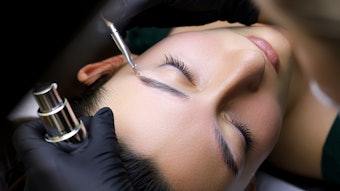
There are many contributors to the formation of healthy skin, but of great importance is its pH level.
The human body’s entire system depends upon maintaining a pH balance that promotes its general health and well-being. In relation to the skin, however, changes in pH can have significantly dramatic effects. Healthy pH provides the stratum corneum with a slightly acidic environment. Poor product choices, harsh exfoliants and physical trauma all greatly affect this acidic microniche that offers protection from an offensive world. 
An acronym for the power, or potential, of hydrogen, pH indicates the acidity or alkalinity of a solution. This is measured in units called logarithms using a scale known as the pH scale. This runs from pH 0–14. A solution that is highly acidic will have a lower pH number. So, for example, battery acid, which is highly acidic, measures around pH 1. Acidic solutions contain primarily hydrogen ions (H+), so a pH 1 solution would be composed mostly of hydrogen ions. At the opposite end of the scale, solutions mainly are made up of hydroxyl ions (OH-). So, for example, lye, which is in the range of pH 13–14, is highly alkaline. pH-neutral denotes the middle of the scale and is represented by pH 7. A neutral pH solution contains an equal number of hydrogen and hydroxyl ions, and is neither acidic nor alkaline. Distilled water is a good example of a pH-neutral solution.
The acid mantle
The body’s acid mantle, a protective outer coating, is a key mechanism that keeps out unwanted visitors, particularly of the bacterial variety. The acid mantle’s slightly acidic pH of 4.5–5.5 wards off harmful bacteria, restricting or preventing its growth on the skin. Fortunately, the bacterial flora that is nonpathogenic—or beneficial to the skin—thrives in the acidic environment created by the acid mantle. If it is compromised and a more neutral pH develops, harmful bacteria may proliferate.
Internal pH
Internal pH imbalances result from physiological circumstances, as well as an imbalanced diet—“You are what you eat.” Topping the list of foods that create undesired acidity in the body are refined sugars, caffeine and soda. More alkaline foods include fresh fruits and vegetables. Even citrus fruits, which generally are acidic, are treated as alkaline in nature by the body.
A piece of the puzzle
Although pH is not the only concern when providing great skin care or slowing the aging process, it is a very important piece of the puzzle in the pursuit of better health—both inside and out.
This is an excerpt of an article that ran in the December 2006 issue of Skin Inc. magazine. Contact Allured Publishing to purchase an issue for the entire article: 630-653-2155.










